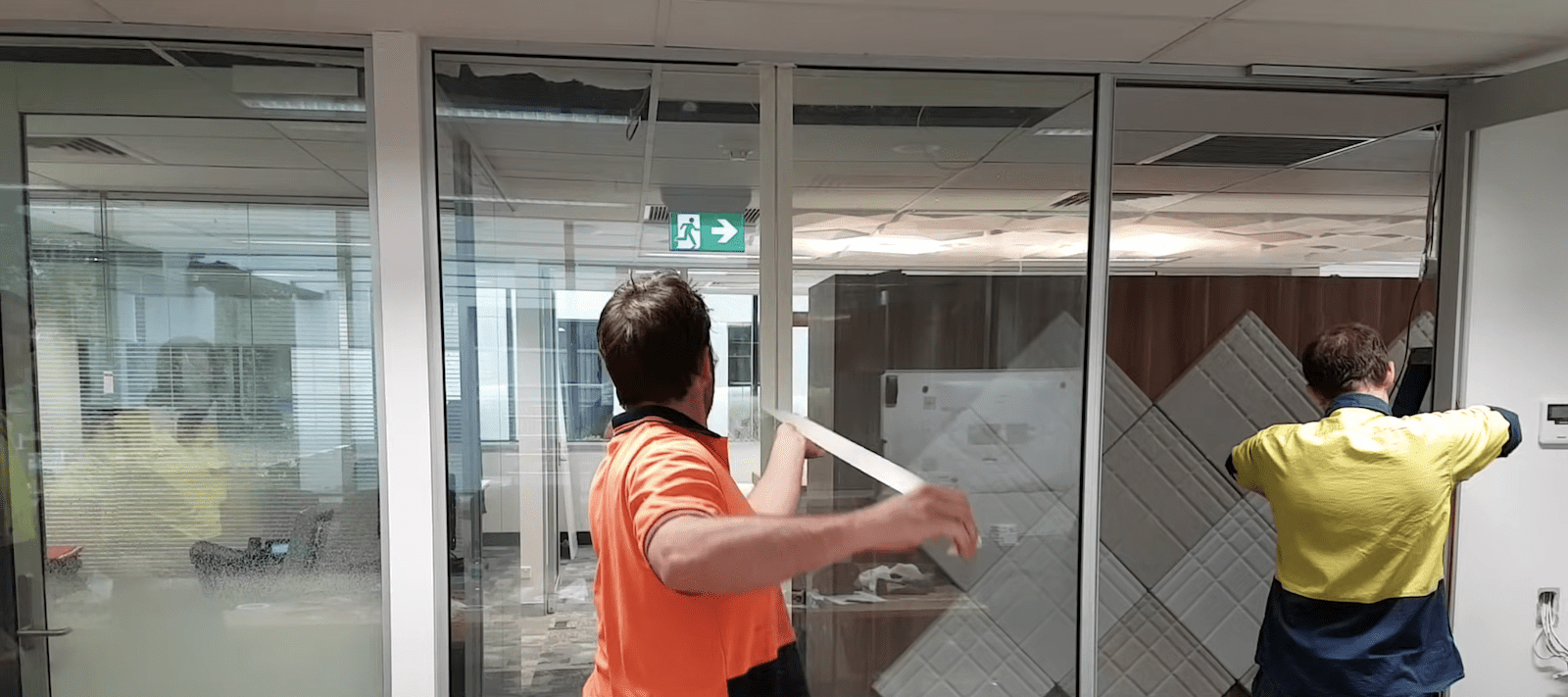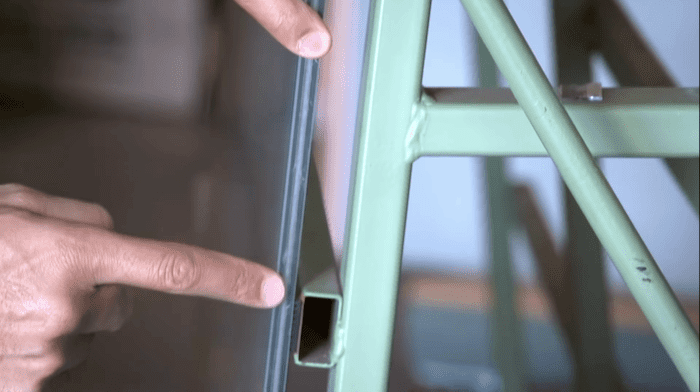News & Updates
Smart Tint vs Switchglass

The Differences Between Switchglass & Smart Tint (DIY switchable glass film)
- Smart Tint is a film that can be retrofitted (stuck on) to the surface of your existing glass.
- Switchglass is a ready-to-glaze product that incorporates a switchable Polymer-Dispersed Liquid Crystal film carefully laminated between two pieces of glass.
We’ve created two videos on this topic of the clear differences between Switchglass and Smart Tint. These visual comparisons of smart tint vs switchglass will help you see the clear differences.
What is Smart Tint?
Smart tint is a retrofitted electronic switchable window film tint that can be fitted on a car or in a home.
This smart film tint is applied to the internal surface of a prior-glazed glass panel. But the film is still external. It’s not protected from the elements, and you risk degradation. Compared to Switchglass, and how it is laminated within multiple glass panels, Smart Tint film’s liquid crystal exposure makes them start to basically come away, affecting this product’s performance. The risk is fast degradation. The video below shares a Smart Tint film after 12 months of weather exposure.
Is installing smart film really that easy?
There are many promotional videos on the internet showing Smart Tint being easily installed in just a few minutes. These videos clearly over-simplify the process.
Handling switchable film (even in the form of Smart Tint) requires considerable skill and experience. If the film is creased, bent or bruised it will damage the liquid crystals inside leaving a clear patch where the damage occurs.
Our Switchglass technicians need a minimum of six months training in the handling, wiring and laying-up of switchable film for lamination. And our clean room (a totally dust-free environment) is monitored to ensure quality handling is achieved and optimum standards are met at all times.
A number of years ago we were considering the possibility of marketing these self-adhesive DIY stick-on electrochromic films ourselves. We tested a number of these switchable smart films (including Smart Tint).
However, based on the results of our testing, we rejected all of the DIY electric glass films that we tried.
Smart Tint Pros and Cons
Pros
- DIY
- Cheap
Cons
There are a few problems with Smart Tint.
- No warranty support
- Easily damaged during installation
- Low clarity
- Limited lifespan
- When cutting or trimming to size the edges are easily damaged
As you’ll see in the video right below, the film doesn’t go all the way to the edge.
And you can see how easy it is to peel the film straight off the glass.
You also have the exposure of the busbars, which can be seen once the film has been applied.
We’ve had to replace entire jobs fitted with Smart Tint because the performance in terms of clarity, bubbling, peeling and imperfections had become too much for the client to bear.
On a recent removal, one of the comments the client had was how much more clear switchglass was compared to Smart Tint. This is because smart tint is a retrofit product. With smart tint retrofitted windows, dust and impurities can get behind the smart film placed on the interior side of the glass panel. And like normal film, you may see bubbling, peeling or degrading over time. It just doesn’t have the same performance as Switchglass. So we definitely don’t recommend installing smart tint film.
This video further explains these pros and cons of smart tint film and introduces a Switch Glass product and how it compares.
A Case in Point
The reason we felt the need to speak up about this DIY electric tint product.
We were recently approached by a disgruntled customer of DIY Smart Tint. The following is a rundown of the customer’s unfortunate and costly mistake in choosing Smart Tint over Switch Glass smart glass, a superior electronic tinting glass.
Their DIY Smart Tint film arrived rolled up and packed into a box which contained all the equipment; the smart film was approximately cut to size for each of the windows. The client’s Project Manager organised a local tinter to install the Smart Tint using the instructions provided. After the installation the client commented that the film was not very clear, with an unacceptably high level of haze. He also commented about the edges being slightly damaged and bubbles visible in the film.
Overall, the customer was definitely not satisfied with the outcome. The Project Manager communicated the customer’s dissatisfaction with the Smart Tint supplier and was given some tips on how to improve the clarity, i.e. by ramping up the voltage to the Smart Tint (this is not a good idea as it can damage the sensitive PDLC film and shorten its lifespan). This did temporarily improve the clarity, but the transformer could only run the Smart Tint for 2-3 minutes before shutting off, then needing 10 minutes to cool before starting up again.
After being initially responsive to the Project Manager’s needs the Smart Tint supplier then ceased further communication for no apparent reason. Now the Project Manager is looking to start legal action against them. This will be challenging as he has no Australia electrochromic glass supplier. His supplier is located in the United States and he is in Australia. The customer concluded that the performance of the Smart Tint (and the lack of follow-up support) was unacceptable.
We were approached and met with all the stakeholders. Upon testing our sample and witnessing the results, their response was that the “Switchglass was much clearer than the Smart Tint”.
“Switchglass was much clearer than the Smart Tint”.
At the end of the meeting it was agreed that the Smart Tint and glass would be removed and our Switchglass installed in its place.
Why We Recommend Switch Glass Over Smart Tint (& Other Smart Film Products)
A key element of Switch Glass is its PDLC Smart Film. Polymer Dispersed Liquid Crystal (PDLC) Film is made up of micron-sized liquid crystal droplets spread out within an optically isotropic polymer matrix.
With Switchglass privacy glass, the PDLC Film is laminated between two pieces of glass.

Once it’s laminated, it’s not exposed to the elements such as moisture from humidity which may cause it to deteriorate over time.
In fact, the longest operating panel has been installed in IBM in the US. And has been operating for more than 23 years.
Finally, one of the biggest differences between smart tint and switch glass is the clarity.
Smart Glass VS Smart Film
Caveat Emptor – Let the buyer beware.
Because of the unreliability of DIY smart films and the Smart Tint product, we don’t recommend customers retrofit these electric tint films onto their windows.
This has been a very costly exercise for the customer who has spent nearly double the amount of what it would have cost to have Switchglass installed in the first place. We will have some updates coming from our DIY smart film case studies as more replacement installations take place. We capture the video, pictures and interviews with the customer, Project Manager, builder and architect. Our aim is to provide relevant information that will assist all parties and future customers in making an educated decision.
The Verdict On Smart Tints
Smart Tint and DIY smart films may seem like an attractive option due to the promoted ease of installation and low cost, but we advise caution – as the above scenario clearly demonstrates.
Next time you’re thinking of switchable privacy glass, consider a product like our Privacy Smart Glass. Our Switch Glass smart glass is completely laminated and sealed as one unit. It makes it much more reliable, increases longevity and a much improved appearance.
In conclusion, smart tints and Switch Glass switchable privacy glass both offer unique solutions for controlling light and privacy. While smart tints may provide a quick and convenient option, they often lack durability and can suffer from a number of performance issues. On the other hand, Switch Glass’s switchable privacy glass powered by PDLC film provides a reliable and long-lasting solution that is easy to use. With a simple flick of a switch, you can control the amount of light and privacy in your space, making it ideal for any environment. So, if you’re looking for a high-quality and versatile smart glass solution, look no further than Switch Glass. With products made in Australia and available for worldwide installation, you can enjoy the benefits of Switch Glass in your space, no matter where you are. Visit our website today to inquire about our products and start experiencing the future of smart glass.
Next In News: How Does Switch Glass Work?
CATEGORIES
- Architectural Applications (1)
- Know Your Product (15)
- Switchglass News (13)




























